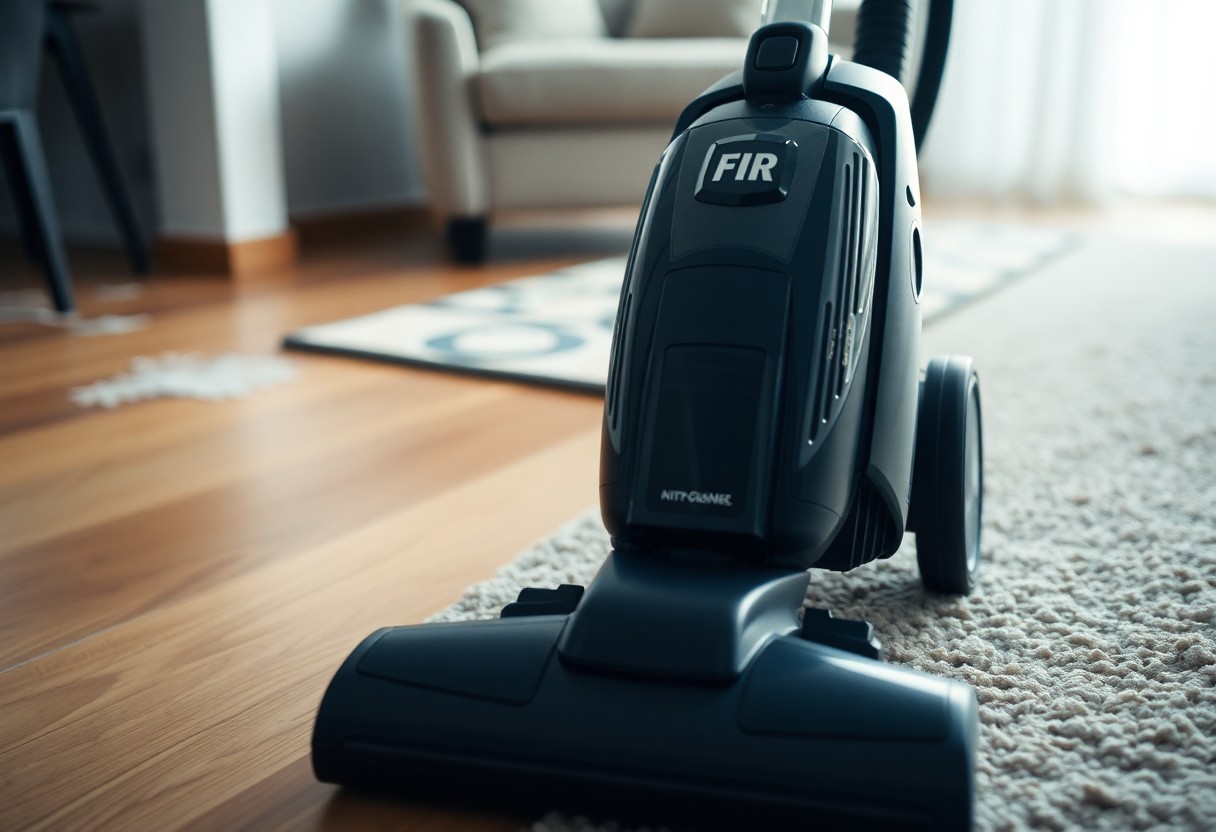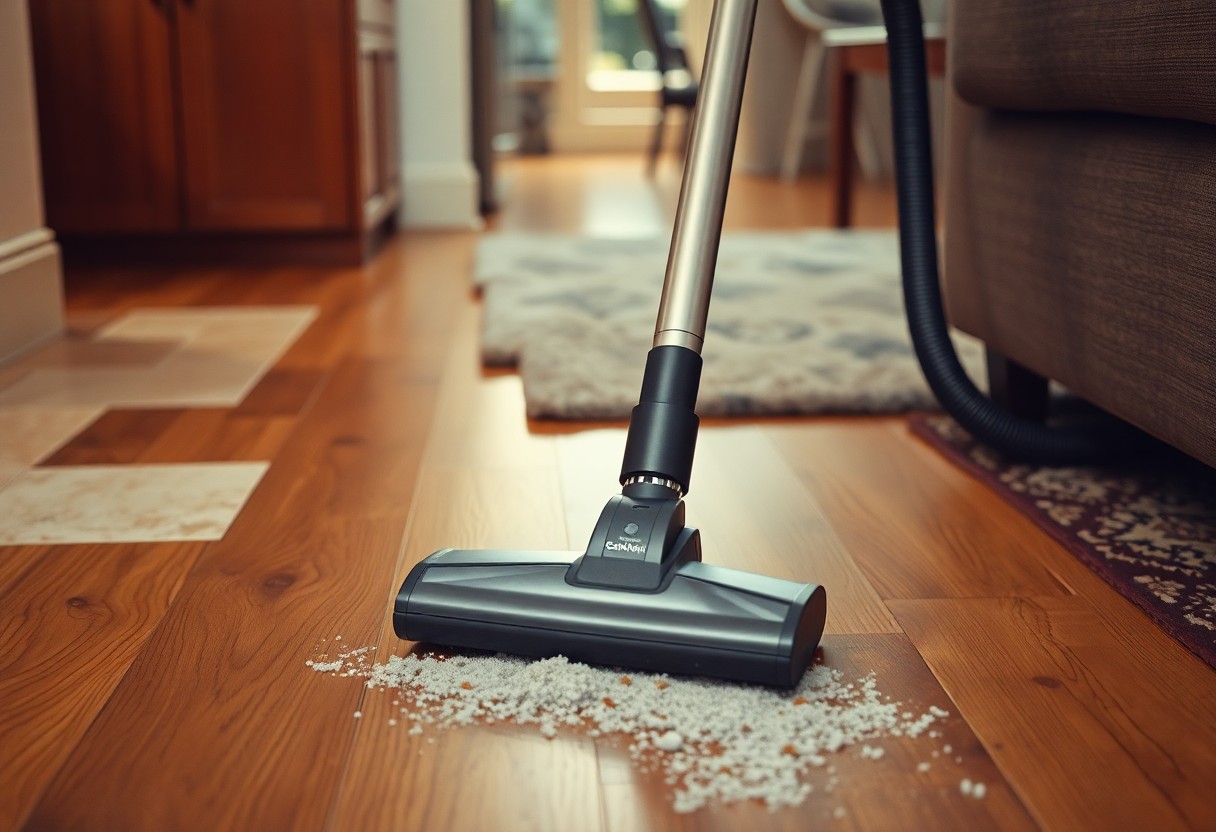Most homeowners may not realize that optimizing your vacuum cleaner’s performance on various surfaces can significantly enhance your cleaning routine. By understanding the best techniques and settings for different floor types, you can ensure that your vacuum removes dirt and allergens effectively, keeping your home cleaner and healthier. In this guide, you will discover powerful solutions that will help you master the art of vacuuming on carpets, hardwood, tiles, and more, enabling you to get the most out of your cleaning appliance.
Contents
- Understanding Your Vacuum Cleaner
- Types of Vacuum Cleaners
- Key Features to Consider
- How to Vacuum Different Surfaces
- Hard Floors
- Carpets and Rugs
- Tips for Optimizing Vacuum Performance
- Maintenance and Care
- Essential Vacuum Attachments
- Factors Affecting Vacuum Efficiency
- Surface Material
- Pet Hair and Allergens
- Best Practices for Effective Vacuuming
- Cleaning Techniques
- Frequency of Use
- Troubleshooting Common Vacuum Issues
- Loss of Suction
- Blockages and Maintenance
- Final Words
Understanding Your Vacuum Cleaner
The effectiveness of your vacuum cleaner largely depends on your understanding of its components and capabilities. Familiarizing yourself with how your vacuum operates will optimize its performance on various surfaces and aid in maintaining a clean environment. Knowing which features and attachments will be most beneficial for your cleaning routine will save you both time and effort.
Types of Vacuum Cleaners
On the market today, you’ll find various vacuum cleaners that cater to different needs. Each type has unique features suited for specific purposes:
| Upright | Ideal for large carpeted areas. |
| Canister | Versatile for both carpets and hard floors. |
| Robot | Automated cleaning for convenience. |
| Handheld | Perfect for quick clean-ups and tight spaces. |
| Stick | Lightweight and easy to store, ideal for hard surfaces. |
- Upright
- Canister
- Robot
- Handheld
- Stick
Any vacuum cleaner can be beneficial if you choose the right one for your cleaning tasks.
Key Features to Consider
Features play a pivotal role in how effectively your vacuum cleaner performs. As you explore different models, it’s important to assess their key features that cater to your specific cleaning needs:
- Filtration System
- Power Rating
- Attachment Options
- Cord Length
- Weight and Maneuverability
Knowing these features will help ensure you select a vacuum cleaner well-suited to your lifestyle and cleaning requirements.
Features such as a strong filtration system can significantly affect air quality, while the power rating influences performance on various surfaces. Additionally, having versatile attachment options will allow you to tackle different cleaning tasks efficiently. A longer cord increases your cleaning reach, and lightweight designs make it easier to maneuver around your home.
- Filtration System
- Power Rating
- Attachment Options
- Cord Length
- Weight and Maneuverability
Knowing how these features align with your cleaning needs will make your vacuum cleaner a powerful tool in maintaining your home.
How to Vacuum Different Surfaces
While getting the most out of your vacuum cleaner, it’s important to understand how to adjust your technique based on the type of surface you’re cleaning. For advice on surface-specific cleaning tools, check out the Surface Cleaner | Pressure Washing Institute – XenForo. Different materials require different approaches for optimal results.
Hard Floors
The best way to clean hard floors is by using a vacuum with a hard floor setting. This setting minimizes the risk of scratches while effectively picking up dust and debris. Be sure to use a vacuum head designed for hard surfaces to maximize your cleaning efficiency.
Carpets and Rugs
Surfaces like carpets and rugs need a different vacuuming strategy since they trap dirt and allergens within their fibers. You should consider using a vacuum with strong suction and a rotating brush to dislodge particles effectively. Additionally, make sure to adjust the height of your vacuum for optimal performance on various carpet lengths.
Understanding the right techniques for carpets and rugs can significantly impact your indoor air quality. Regular vacuuming not only helps maintain carpet appearance but also removes allergens that may affect your health. It is advisable to vacuum at least once a week, or more often for high-traffic areas, ensuring you cover all corners and edges for the best results.
Tips for Optimizing Vacuum Performance
Some ways to enhance your vacuum’s performance include:
- Regularly clean or replace filters.
- Ensure the vacuum bag or container is not full.
- Use the appropriate setting for different surfaces.
- Check for clogs in hoses and brushes.
Recognizing these factors can significantly improve your vacuum’s effectiveness and longevity.
Maintenance and Care
Maintenance of your vacuum cleaner is vital for optimal performance and durability. Regularly inspect the hose and brushes for debris, clean the filters as recommended, and empty the dust container frequently. Additionally, checking for blockages and ensuring all attachments are functioning correctly can help maintain suction power. Frequent upkeep will not only enhance efficiency but also prolong the lifespan of your appliance.
Essential Vacuum Attachments
Tips on using vital vacuum attachments can significantly affect your cleaning efficiency. Ensure you are utilizing specialized tools for different surfaces and tasks in your home.
Performance of your vacuum can be elevated with the right attachments. For instance, a crevice tool is perfect for tight spaces, while a pet hair brush is vital for homes with furry friends. Upholstery tools clean furniture surfaces effectively, and dusting brushes can gently clean delicate items. Understanding and utilizing these attachments will help you achieve a deep clean throughout your home.
Factors Affecting Vacuum Efficiency
Many elements influence the efficiency of your vacuum cleaner, affecting how well it performs across different surfaces. Consider the following factors:
- Type of vacuum cleaner
- Cleaning attachments used
- Surface texture and material
- Filtration system
- Vacuum maintenance and upkeep
Knowing how these factors interact can help you optimize your cleaning routine for the best results.
Surface Material
Clearly, the material of the surface you are cleaning plays a significant role in determining how effectively your vacuum can pick up dirt and debris. Different surfaces, such as carpets, hardwood, tile, or upholstery, require specific types of vacuuming techniques and attachments to maximize efficiency.
Pet Hair and Allergens
Material conditions in your home, like the presence of pet hair and allergens, can greatly impact your vacuum’s performance. These substances may cling to surfaces or embed deeply into fabrics, necessitating a vacuum that specializes in such challenges.
Vacuum cleaners designed specifically for pet owners often include powerful brush rolls and specialized filters that target hair and allergens. Employing a vacuum with a high-efficiency particulate air (HEPA) filter can significantly reduce allergens in your home, ensuring you maintain a healthier living environment while keeping your surfaces immaculate.

Best Practices for Effective Vacuuming
Keep your vacuum cleaner in top condition by regularly checking and cleaning the filters, brushes, and canisters. Ensure you adjust the height setting appropriately for different flooring types to maximize suction efficiency. Utilize slow, deliberate motions when vacuuming to give the machine time to capture dirt and debris. Always start from the furthest corner of the room and work your way toward the exit, allowing for a systematic and thorough clean.
Cleaning Techniques
To achieve the best results, use different cleaning techniques tailored to each surface. For carpets, employ a back-and-forth motion, while for hard surfaces, use a side-to-side sweeping action. Don’t forget to reach under furniture and into nooks by employing the crevice tool. For upholstery, remember to utilize the appropriate attachment, allowing you to effectively remove dust and allergens without causing damage.
Frequency of Use
Frequency with which you vacuum plays a key role in maintaining a clean living environment. Regular vacuuming helps reduce allergens and improves air quality in your home.
Understanding how often to vacuum depends on various factors like household size, presence of pets, and individual lifestyles. Ideally, you should vacuum high-traffic areas at least once a week, while less frequented spaces can be done biweekly. If you have pets, more frequent vacuuming may be necessary to control shedding and dander. Assess your specific needs to develop a personalized cleaning schedule that keeps your home consistently fresh and clean.

Troubleshooting Common Vacuum Issues
Unlike other household appliances, your vacuum cleaner may occasionally experience issues that can hinder its performance. Understanding how to troubleshoot these problems can save you time and help you achieve optimal cleaning results. By identifying common issues and their solutions, you can ensure your vacuum operates effectively on various surfaces, keeping your home spotless and fresh.
Loss of Suction
An immediate loss of suction can be frustrating, and it often signals that your vacuum needs attention. Start by checking the filters, as clogged or dirty filters can restrict airflow. Also, inspect the vacuum bag or canister — a full bag can limit efficiency. Make it a habit to regularly maintain these components to prevent suction loss.
Blockages and Maintenance
Maintenance plays a significant role in ensuring your vacuum performs well. Regularly check for blockages in the hose, brush roll, and other attachments that could disrupt airflow and affect suction. Clear any debris that might have accumulated, as even small items can create significant problems. Keeping your vacuum clean will help you avoid larger, disruptive issues down the line.
With a proactive approach to your vacuum maintenance, you can extend the life of your appliance. Make it a routine to inspect all parts of your vacuum cleaner, not just when you notice a problem. Look for signs of wear or damage, and replace any worn components promptly to ensure peak performance. By maintaining your vacuum effectively, you’ll reduce the likelihood of blockages and keep your home cleaner for longer.
Final Words
Summing up, effectively using your vacuum cleaner on various surfaces enhances your cleaning routine and ensures your home remains tidy. By understanding the settings and attachments needed for different materials, such as carpets, hardwood, or upholstery, you can achieve optimal results. Regular maintenance of your vacuum will also prolong its lifespan and efficacy. With these strategies, you’ll make the most out of your vacuum cleaner, keeping your living space spotless and inviting.

Leave a Reply